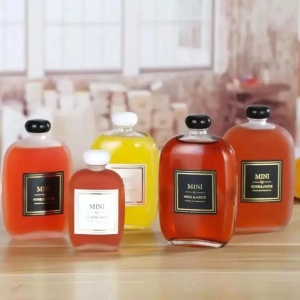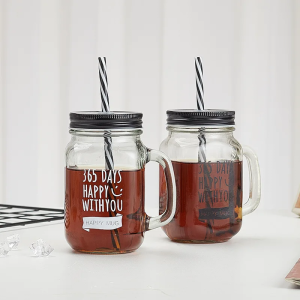Packaging is more than just a container for your beverage, it is an important part of your company’s brand and consumer experience. The right packaging can maintain the quality of your beverage, extend its shelf life and attract customers. In the highly competitive beverage industry, choosing the right bottle type can make all the difference.
Glass bottles and plastic bottles are the two main options for beverage packaging. Each material has its own advantages and disadvantages that beverage companies need to consider carefully.

Environmental impact
Glass bottles: Pros and cons
Glass bottles are made from natural materials such as sand, soda ash and limestone. They are non-toxic and can be recycled indefinitely without compromising quality or purity. However, producing glass bottles requires a lot of energy, and their weight leads to higher transport emissions.
Plastic bottles: pros and cons
Plastic bottles are lightweight, reducing transportation costs and emissions. They are also shatterproof, which brings convenience to consumers. However, plastic, especially PET (polyethylene terephthalate), which is commonly used to make bottles, comes from non-renewable petroleum sources. If not properly recycled, they can cause environmental pollution.
Environmental footprint comparison
When comparing the environmental footprint of glass and plastic bottles, it is important to consider the entire life cycle of the product, from production to disposal. Due to the energy-intensive manufacturing process, glass bottles have a higher initial environmental cost, but they can be recycled more efficiently. Plastic bottles have a low production footprint, but pose significant environmental challenges due to plastic waste and low recycling rates.
Health and safety precautions
Chemicals leach out of plastic bottles
One of the main problems with plastic bottles is the possibility of chemicals leaching out. Chemicals such as BPA (bisphenol A) and phthalates can leach into juice from plastic, especially when exposed to heat or sunlight. These chemicals have been linked to a variety of health problems, prompting consumers to seek safer alternatives.
Purity and safety of glass bottles
Glass is an inert material, which means it will not react with the beverage it contains. This ensures that the juice remains pure and uncontaminated. For health-conscious consumers, glass bottles can provide peace of mind that they do not pose a risk of chemical leaching

Cost analysis
Glass bottle production cost
Producing glass bottles requires a lot of energy and is expensive. Raw materials are relatively cheap, but the high temperatures required for manufacturing and the costs associated with glass molding and molding add to the overall cost.
The production cost of plastic bottles
Plastic bottles are usually cheaper to produce than glass bottles. The production process uses less energy and has lower material costs. However, oil price fluctuations can affect the cost of plastic production.
Long-term cost implications for juice companies
While plastic bottles cost less upfront, glass bottles are more cost-effective in the long run because they are recyclable and reusable. In addition, the high-end image of glass bottles can justify the higher pricing of juice products, which has the potential to increase profit margins.
Consumer preferences and market trends
Consumer perception of glass bottles
Consumers often think of glass bottles as a high-end packaging option. They associate glass with quality, purity and luxury. For juice companies aiming to position their products at the high end of the market, glass bottles can boost their brand image and appeal to discerning customers.
Consumer perception of plastic bottles
Plastic bottles are seen as convenient and practical. They are lightweight, shatter-proof, and often come with resealable caps, making them perfect for carrying around. However, there is a growing awareness and concern among consumers about the impact of plastics on the environment, which may affect purchasing decisions.
Beverage packaging market trends
Market trends show that consumers are increasingly gravitating towards sustainable packaging. Consumers are increasingly seeking environmentally friendly options, and companies that adopt sustainable practices are gaining a competitive advantage. Glass bottles are more sustainable and fit well with these market trends.
Practical and convenient
Durability and risk of breakage
One of the disadvantages of glass bottles is that they are fragile. They break easily, posing safety risks and resulting in product loss. On the other hand, plastic bottles are durable and not easily broken, making them a practical choice for everyday use.
Weight and transport
Glass bottles are heavier than plastic bottles, resulting in higher shipping costs and a larger carbon footprint. Plastic bottles are lightweight, reducing transportation costs and making them easier to handle for both manufacturers and consumers.
Convenient for consumer use
Plastic bottles often have features such as resealable caps and ergonomic designs that improve their usability. Glass bottles, while giving them an upscale feel, may not always be convenient to use, especially for an active lifestyle.
Sustainability and recycling
Glass bottle recycling process
Glass bottles can be recycled indefinitely without any loss of quality. The recycling process involves melting the glass and remaking it into a new bottle. This process is highly efficient and helps reduce the need for raw materials.
Plastic bottle recycling process
Plastic bottles can be recycled, but the recycling process is more complex and less efficient than glass bottle recycling. Plastic degrades over time, limiting the number of times it can be recycled. In addition, not all types of plastic can be recycled, and pollution reduces the effectiveness of recycling programs.
The effectiveness of the recycling program
The effectiveness of recycling programs varies widely. In areas where recycling infrastructure is in place, both glass and plastic bottles can be effectively recycled. However, in areas with limited recycling facilities, plastic bottles are more likely to end up in landfills or as waste.

conclusion
Choosing between glass or plastic bottles to pack juice requires consideration of a variety of factors, including environmental impact, health and safety, cost, consumer preference, practicality and sustainability. Each bottle has its advantages and disadvantages, and the best choice depends on the specific needs and goals of the juice company.
For juice companies looking to align with premium brands and sustainability, glass bottles are a better choice, despite the higher production costs and difficulties in shipping. They offer superior purity, recyclability and superior consumer perception. However, for companies prioritizing cost-effectiveness and convenience, plastic bottles remain a viable option, especially when there are strong recycling programs in place.





